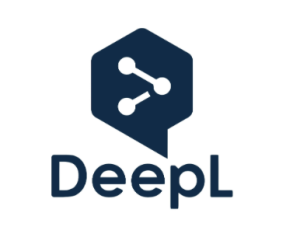DeepL - Full Guide & Review
Quick overview:
In a world where the barriers of language are continuously being challenged, DeepL emerges as a front-runner in the realm of neural machine translation services.
Its sophisticated approach to bridging language gaps has not only garnered attention but also earned it a reputation as a significant player in the AI-powered translation landscape.
With its advanced technology and expanding capabilities, DeepL has become a go-to resource for individuals and businesses seeking accurate and efficient language translation solutions.
What is DeepL?

DeepL is a cutting-edge translation service known for its exceptional accuracy and nuanced understanding of languages.
Launched in 2017, it has quickly risen to prominence, distinguishing itself in the competitive field of machine translation.
DeepL’s core service revolves around translating text across multiple languages, offering a level of precision and fluency that is often compared favorably against its more established counterparts.
The Technology Behind DeepL
At the heart of DeepL’s effectiveness is its use of convolutional neural networks (CNNs). These advanced algorithms are adept at processing and interpreting vast amounts of linguistic data.
CNNs in DeepL’s framework analyze patterns in languages, capturing subtleties and complexities often missed by traditional translation methods.
This deep learning approach allows DeepL to provide translations that are not only accurate but also contextually relevant, maintaining the nuances and idioms unique to each language.
DeepL Translator: Features and Capabilities
DeepL offers a variety of services to cater to diverse translation needs:
- Translate Text – The primary feature, allowing users to translate written content between various languages.
- Translate PDF – This tool enables the translation of PDF documents while retaining their original formatting.
- Translate API – Designed for developers, this API integrates DeepL’s translation capabilities into other software or applications.
- DeepL Write – A relatively new addition, DeepL Write assists in refining and enhancing written texts.
Initially, DeepL’s service included translations between seven European languages. It has since expanded its reach, now supporting translations for 31 languages.
This growth reflects DeepL’s commitment to inclusivity and global communication.
DeepL Pro, the subscription-based premium service, offers additional features to users:
- No Character Limits – Unlike the free version, DeepL Pro removes the limitation on the number of characters per translation.
- Increased Privacy – Translations are not saved on DeepL’s servers, offering enhanced data security.
- API Access – Pro users get access to DeepL’s API, allowing for seamless integration with other tools and software.
- Advanced Formatting Options – DeepL Pro provides greater control over the formatting of translated texts, which is particularly useful for professional and business applications.
By offering these advanced capabilities, DeepL Pro caters to a wide range of professional and personal translation needs, making it a versatile tool in today’s interconnected world.
Performance and Accuracy

When DeepL entered the arena of machine translation, it made a bold claim: its translations were significantly more accurate than those of established giants like Google Translate and Microsoft Translator.
This declaration was not just a marketing ploy but was backed by tangible evidence.
At the time of its launch, DeepL conducted various blind tests and relied on the BLEU (Bilingual Evaluation Understudy) score system, a method widely recognized in the field of computational linguistics for evaluating the quality of machine-translated text against human translations.
The BLEU system assesses the coherence, grammatical accuracy, and contextual relevance of translations. DeepL’s impressive performance in these metrics indicated a superior understanding and rendition of languages.
Language Support and Expansion
DeepL’s commitment to breaking down language barriers is evident in its ever-expanding range of supported languages.
As of the latest update, DeepL supports translations across 31 languages, showcasing its dedication to linguistic diversity and inclusivity. The current list of supported languages includes:
- Bulgarian
- Chinese (Simplified)
- Czech
- Danish
- Dutch
- English (American and
- British)
- Estonian
- Finnish
- French
- German
- Greek
- Hungarian
- Indonesian
- Italian
- Japanese
- Korean
- Latvian
- Lithuanian
- Norwegian (Bokmål)
- Polish
- Portuguese (Brazilian and European)
- Romanian
- Russian
- Slovak
- Slovene
- Spanish
- Swedish
- Turkish
- Ukrainian
DeepL’s journey in expanding its language support has been methodical and user-focused.
Initially, when DeepL Translator was launched in 2017, it offered translations between English, German, French, Spanish, Italian, Polish, and Dutch.
This initial selection was strategic, covering some of the most widely spoken European languages.
DeepL’s approach to expanding its linguistic range is not just about adding more languages; it’s about ensuring that each new addition maintains the high standard of translation accuracy and nuance that DeepL is known for.
This careful and considered expansion reflects DeepL’s commitment to providing a truly global translation tool, one that caters to a wide and varied user base.
DeepL Write: Enhancing Monolingual Texts
DeepL Write, launched as a public beta in January 2023, represents a significant extension of DeepL’s capabilities. Originally developed for internal use, this tool focuses on refining monolingual texts in English and German.
It’s designed to improve the quality and clarity of written content, moving beyond translation to assist in crafting well-articulated and coherent documents.
DeepL Write caters to a diverse audience, from professionals to students, offering AI-assisted enhancements in grammar, style, and overall readability.
Applications in Various Fields

DeepL’s versatile translation capabilities have found applications across various sectors, significantly aiding communication and understanding.
- In Business – Companies operating internationally rely on DeepL for quick and accurate translations, facilitating smoother cross-border communications and transactions. Its ability to handle complex, industry-specific jargon makes it a valuable tool for global businesses.
- Academia – Researchers and students use DeepL to access and comprehend scholarly materials in different languages, broadening their scope of study and facilitating international collaboration.
- Personal Use – Individuals use DeepL for day-to-day translations, such as understanding foreign language content, communicating with friends or family abroad, or learning a new language, making it a handy tool in our increasingly interconnected world.
In each of these contexts, DeepL stands out for its accuracy, ease of use, and ability to handle nuanced translations, making it a reliable assistant in overcoming language barriers.
Alternatives to DeepL
DeepL is a great tool for writing and translating, but there are many other tools available. At insidr.ai we collect and share the best AI tools available to supercharge your business.
Browse all of Thebes tools in 25+ categories here:
Final Thoughts
DeepL stands as a testament to the power of AI in breaking down language barriers. Its precision, ease of use, and broad language coverage make it invaluable for business, academia, and personal use alike.
As we navigate an increasingly interconnected world, DeepL’s role in enhancing communication and understanding across cultures becomes ever more crucial, underscoring its significance in today’s global landscape.










